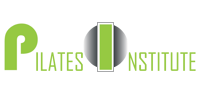The Core of Heart Health
The Core of Heart Health
The strength routine recommended for optimal cardiac fitness
By Arthur Agatston, Prevention
On some days, I feel more like an orthopedist than a cardiologist: The first complaints I hear from my patients concern aching muscles and joints. Problems with knees, ankles, shoulders, and the lower back head the list. I take their complaints seriously, because regular exercise is key to maintaining good heart health and, as you know, if you’re hurt, it’s not easy to work out.
My advice to these patients is to begin a functional/core-training program that safely builds muscle, flexibility, and endurance. A “functional” program is one that exercises many muscle groups in many directions against some resistance. Digging a ditch is a form of functional exercise, but you can achieve the same results (and forgo the mud) with a variety of regimens. For instance, I do Pilates every morning, and since I started 3 years ago, most of my muscle and joint aches and pains have disappeared. I jump out of bed in the morning instead of hobbling out.
Because it includes some resistance training, functional exercise builds muscle mass. By gaining muscle, you raise your metabolic rate—the pace at which your body, even at rest, burns calories. (Your body burns more calories maintaining a gram of muscle than it does a gram of fat.) That helps you drop pounds, which lowers your risk of having a heart attack. Additionally, strong, flexible muscles protect against injury so you are better able to continue cardio workouts essential to heart health.
However, I advocate a very specific functional-training regimen that focuses on core muscles— the ones between your shoulders and your pelvis. Core muscles sheathe and support your spine and are used in all sorts of activities: vacuuming, cleaning windows, planting a rosebush, raking leaves. Because it engages so many muscles, a core workout is highly efficient, speeding you on the road to weight loss.
Unfortunately, with the way some exercise machines are designed, it’s not always easy to get a good core workout. A lot of strength-training equipment isolates specific muscles, such as your biceps. You end up with what I call “mirror” muscles—ones that look good in the mirror or on the beach. But in isolating that single muscle as you exercise it, the machine ends up supporting the rest of your body and you don’t work or strengthen your core at all.
So, a better way to strengthen your biceps is to curl a free weight while standing, with your knees slightly bent and your back straight. You end up working out not just your arms but also the muscles of your abdomen, back, and legs. If you work with hand weights, do your shoulder presses and lateral raises while twisting your torso. If you take just one gym class a week, make it Pilates.
With a strong core, you’re assured of being able to carry on with your heart-fortifying campaign. And if you stay injury free, you’ll get me out of the orthopedic racket and free me up to do what I do best: be your heart doctor.
Work out after a heart attack, too
Heart-strengthening exercises are also essential after a heart attack and can reduce the risk of death from a second heart attack by as much as 30%. But only 18% of patients get even one session of cardiac rehab after being released from the hospital, says the journal Circulation. It’s wise for patients who have had a heart attack or bypass surgery to sign up for what’s called secondary prevention, which includes supervised exercise, social support, and counseling about nutrition and stress.
ARTHUR AGATSTON, MD, a preventive cardiologist and an associate professor of medicine at the University of Miami Miller School of Medicine, conducted several groundbreaking studies on heart disease and wrote the international bestseller, The South Beach Diet. He maintains a cardiology practice and research foundation in Miami Beach, FL.
